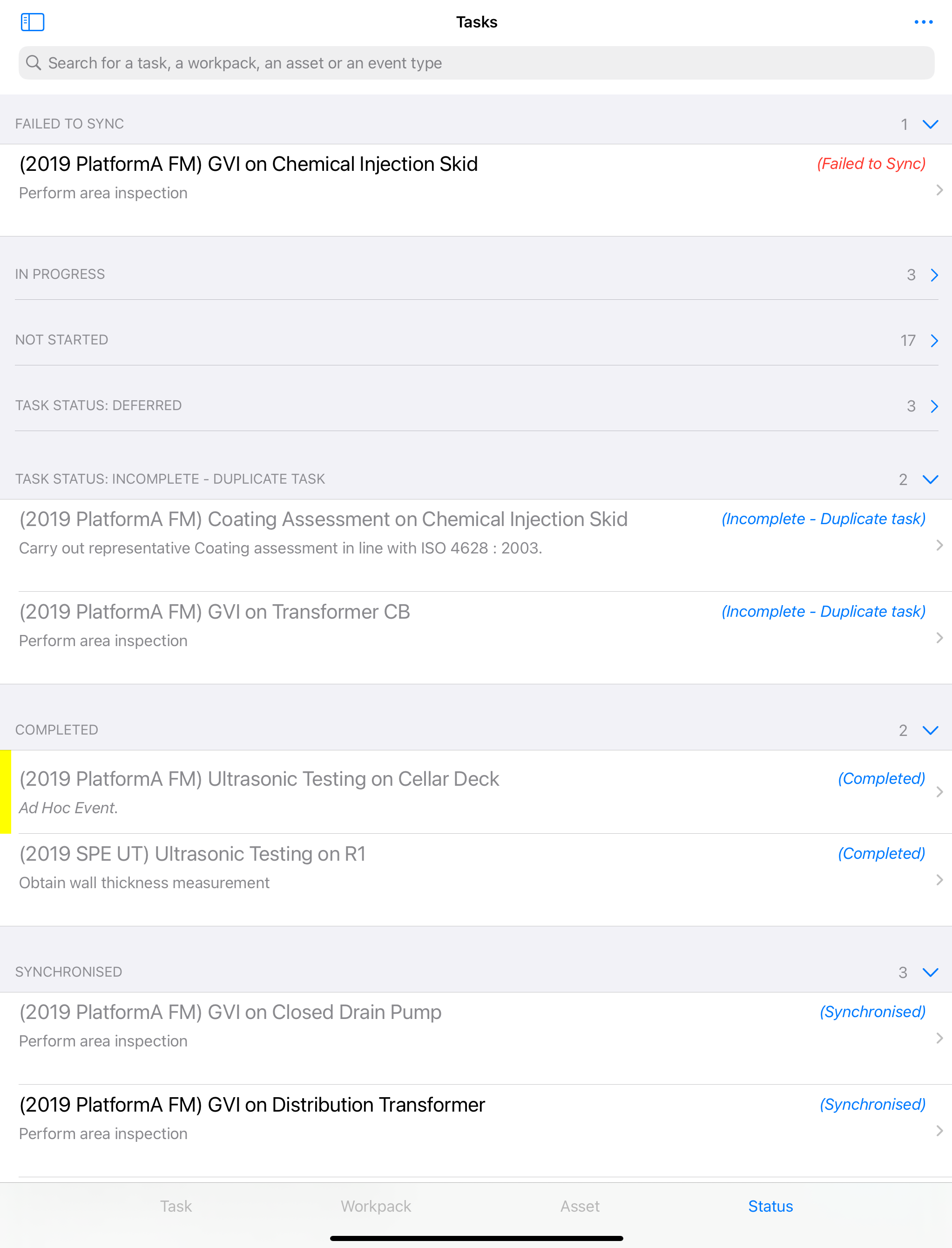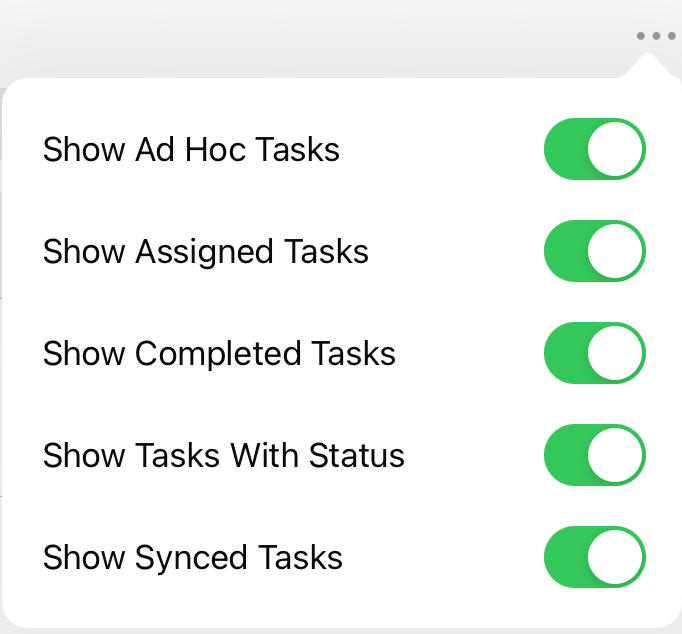Tasks Screen
On the Tasks screen, you can see the complete list of tasks assigned to you, as well as ad hoc tasks and all ad hoc events that you created from ad hoc tasks. Tasks are assigned to you by an integrity engineer or work planner in NEXUS IC (see Assigning Tasks). The total number of all tasks is displayed next to Tasks in the sidebar.
Filter Tasks
You can choose which tasks to show by tapping the  ellipsis at the top right:
ellipsis at the top right:
Note
To make the Show Synced Tasks option visible, go to the Settings screen and disable Remove Completed Tasks During Sync under SYNC.
The filters Show Completed Tasks, Show Tasks With Status and Show Synced Tasks will only work if either the Show Assigned Tasks filter, the Show Ad Hoc Tasks filter, or both are enabled.
Grouping of Tasks
Depending on the view selected in the bottom menu, tasks are grouped as follows:
View |
Grouping |
|---|---|
Task |
Tasks are grouped based on their task type, that is, whether they are assigned or ad hoc. Ad hoc events created for ad hoc tasks are also included in the task list. |
Workpack |
Tasks are grouped by the workpack the task is assigned to. This assignment is defined in the Workpack field when a task is created in NEXUS IC (see Tasks). |
Asset |
Tasks are grouped by the name and location of the asset to which the task belongs. This value is defined in the Asset field when a task is created in NEXUS IC (see Tasks). |
Status |
Tasks are grouped by their statuses. For more information about the available statuses, see Task Statuses. |
By default, tasks within these groups will be ordered by the order number given to the task in NEXUS IC. If no order number is defined, then they will be ordered by name.
You can expand or collapse the list of tasks under the grouping header they belong to. You can also see the number of assigned tasks for each grouping next to the grouping header.
Search Tasks
You can search for tasks by entering your search term in the search bar at the top of the screen. On the Tasks screen, the search function indexes the Task Name, Asset Name or Location, the Event Type Name, and Workpack Name or abbreviation depending on the ‘workpack display name’ setting.

Task Statuses
The task statuses are displayed in italics, next to each task in a task list. These statuses have either been manually selected by the user or automatically determined by IC-Inspector, based on the actions performed on the task.
Tasks can be grouped by their status by selecting the Status view from the bottom menu on any screen that displays a task list.
For detailed information about how tasks statuses are determined, see Set Status.

